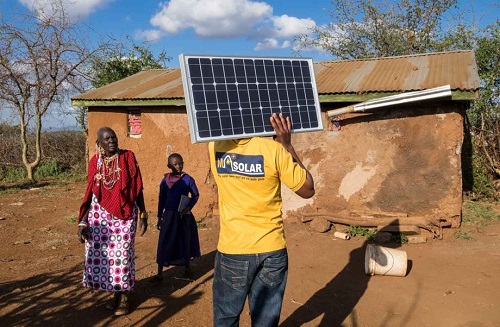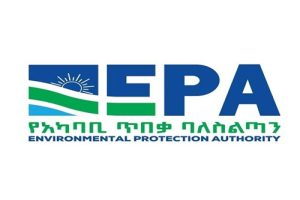
BY EPHREM ANDARGACHEW
The current energy resources exploration task is supported by various information communication technologies. Because energy is the main input of the socio-economic development of the nation since the process of socio-economic development requires the use of advanced levels of energy utilization. It is also essential in our daily lives as it is a basic human need.
All forms of fuels utilization could be considered as an energy resource in the modern world. It could be used either for heating, the generation of electrical energy, or for other forms of energy conversion processes. Energy resources can be roughly categorized into three groups: renewable, fossil, and nuclear. Ethiopia, among the three energy sources, has abundant renewable energy resources. The country has the potential to generate above 60,000 megawatts (MW) of electric power from hydroelectric, wind, solar and geothermal sources.
In spite of all its available potential, the energy sector of the country is still in its infancy stage. The majority of Ethiopia’s population lives in rural areas without access to modern energy and depends mainly on traditional biomass energy sources. Accordingly, Ethiopia has one of the lowest electricity consumption.
Taking energy access and security are key factors to socio-economic development into account, the government of Ethiopia designs various mechanisms in order to solve the energy problem of the country. As a result, universal electrification access, energy efficiency improvement, and developing decentralized off-grid power generation are given due attention.
Besides, the flagship project, the Great Ethiopian Renaissance Dam (GERD), is under construction to raise the country’s energy production and strength a country to be a major producer of renewable energy in eastern Africa.
Furthermore, the government has been working to improve the reliability of the energy supply of the country, increase access to affordable modern energy, promote efficiently, cleaner, and appropriate energy technologies and conservation measures, strengthen the energy sector, ensure environmentally friendly, sustainability of energy supply, and strengthen energy sector financing.
According to Ethiopian Ministry of Water and Energy Minister Engineer Habitamu Itefa (Ph.D.), previously, there have been various attempts to utilize the country’s energy however the attempt hasn’t fulfilled the intended result.
Currently, therefore, the country has made several adjustments to obtain the energy potential of the nation. Furthermore, the government has opened rooms for private sectors to invest in energy development projects in Ethiopia, he said.
It is a clear fact that Ethiopia should do a lot to utilize its energy resources properly. Developing energy resource options is central not only to fulfilling the energy demand of the country but also to achieving climate change mitigation efforts. Because only around 45 percent of the country’s population has got access to electricity. From this, the urban population has 97 percent while the rural area is at about 31 percent access to electricity. The population of over 110 million people of the country is also experiencing frequent energy shortages and blackouts.
Based on the 2019 report, Ethiopia’s current total installed capacity of electric generation is about 4.5 GW which is essentially generated by hydro (90 percent) and followed by wind energy (7.6 percent). These facts clearly have shown that the country requires more and more intensive energy development tasks.
On the word of Environment, Forest, and Climate Change Commission, Ethiopia has been discharging its obligation by emanating renewable energy through its green economy policy. The national renewable energy initiative has been also emulated from its green economy strategy, however, much remains to be done.
In order to exploit the nation’s energy resources, it is key to discuss with the Regional States, stakeholders, and concerned bodies regarding the energy development of the country. Especially, policies on rural energy, technology expansions, and Biogas technology development requires a lot of collaborative work, Engineer Habitamu Itefa (Ph.D.) said.
It is true that Ethiopia has been emanating energy resources predominantly from hydropower, adding that, works are also underway to utilize wind and solar energy widely. In this regard the Ministry is expected to work hard in the energy sector, he added.
Ethiopian Ministry of Water and Energy State Minister Dr. Sultna Weli said that there is a draft energy policy that needs to be finalized and ratified. Implementing the energy policy is significant to attain a national electrification program and biogas technology development. Because renewable energy utilization and management require policy guidance.
Ethiopia, among the projects which are planned for the next 10 years, will construct 16 hydropower, 24 wind, 17 steam, and 14 solar power projects across the nation. The construction of the planned power projects cannot be achieved by the efforts of the government alone; it needs the participation of a private-public partnership strategy.
Cognizant of this, the Ethiopian Ministry of Water and Energy has launched an “Energy Access Explore –platform” which is developed in collaboration with partners. The platform is key since it shows and indicates the energy potential of various landscapes in the country.
According to Engineer Habtamu Itefa (Ph.D.), the platform primarily provides information on energy potential in various parts of Ethiopia. It also helps to accelerate the national development endeavor by pointing out the energy options and where they should be developed in the country. In this regard, the platform will benefit the country a lot.
Developing and addressing energy provision requires various tasks. The consumption of energy has generally been taken as an index of the standard of living. The population has been utilizing energy in the form of firewood, fossil fuels, and electricity to make life comfortable and convenient. Producing and making available energy would also help the agriculture and industry sector of the country. Accordingly, the platform is fundamental since it indicates the energy potential of each landscape and climate zone.
The energy proclamation of the country has allowed the private sector to participate in energy development in collaboration with the government. This enables investors to join the sector and play their role in alleviating energy shortages in the country. The platform, along with others ICT technologies, will help to access more power by pointing out alternatives to the grid power supply in areas where there is a shortage of energy, he said.
The “Energy Access Explore-Platform” provides information to the private sector and development partners on energy access and scarcity in the country, which indicates that it will be more useful where investors work, he added.
In Ethiopia, official reports and documents have stated that only 45 percent of the population has benefited from the energy provision of the country and the remaining 55 percent of the people need energy. In order to fulfill the energy demand of the country, the Ministry, by 2025, is working towards full access to energy from wind, solar, geothermal, and hydro energy sources. Hence, the Platform is important to fully utilize the energy potential of the country. The Platform, if it is applied properly, is also key to providing modern, and up-to-date information which could fulfill the energy demand of the population.
The Ethiopian Herald January 23/2022




